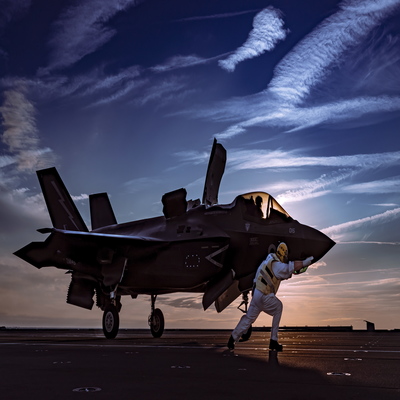Current military aircraft include a comprehensive range of displays, weapons systems, navigation equipment, sensors, communications and electronic warfare systems which are crucial to their lethality and survivability.
At a glance
-
- Dates
-
- 11 - 15 May 2026
- Duration5 days.
- LocationCranfield University at Shrivenham
- Cost£2,250 - Standalone Short Course fee Concessions available
What you will learn
On successful completion of the course you will be able to:
- Describe the operation of avionic communications, radar and electro-optic sensors and displays and navigation systems, relating the performance of such systems to design characteristics and parameters and to the environment,
- Identify the main electronic support and attack threats to airborne radar and electro-optic sensors and communication systems and propose defence measures to counter these threats,
- Analyse and evaluate the effect of an electronic attack on an avionics system (communications, radar and electro-optic sensors) and quantify the impact of electronic defence.
Core content
Military Airborne Radar
- Comparison with other sensors; bands of operation; pulse ranging; low PRF pulsed parameters; detection theory; radar cross section; noise and clutter; pulse Doppler techniques; tracking radar; applications – Airborne FCR/AI, AEW, SAR/GMTI, altimeters.
Airborne radar EW
- Basic concepts; signal intercept; noise jammers; stealers; passive decoys (chaff); active decoys; EA against tracking radars; ED of tracking radars.
Digital and Satellite Communications
- Introduction to analogue voice communications for air-to-air and air-to-ground communications; frequency bands used, propagation, link budget calculations, types of military radio system in common use; introduction to digital communications on airborne platforms; modern military digital radio systems, eg. Saturn, Havequick etc.; introduction to cryptography, platform-mounted-antennas at HF, VHF and UHF; introduction to satellite communications – basic concepts, Skynet IV and V, satellite communications to airborne platforms.
Communications EW
- Introduction to Communications EW; overview of methods of surveillance, attack and defence; examples of application of Comms EW in airborne systems.
Airborne EO/IR Sensors
- EO/IR in context; basic optics; atmospheric propagation; signature and scene generation; image intensifiers; thermal imagers; missile seeker systems.
Laser Applications and DEW
- The laser principle, population inversion, spontaneous and stimulated emission; different laser types (gas, solid state, tuneable), pulsed/CW operation and energy levels; laser range finding, active laser target illumination; EO sensor detection via retro reflection; laser dazzle and damage of EO sensors.
Displays (head up/down, helmet)
- Generic types, head-up, head-down, helmet mounted.
GPS
- Principles of operation of GPS; errors; signal structure; EW vulnerabilities; modernisation programme.
Inertial Navigation
- Inertial Sensors – accelerometers, angle and rate gyroscopes; inertial navigation – principles of stable platform and strapdown INS; co-ordinate systems – local level (LLIN) and space stable (SSIN) systems; inertial, earth and geodetic based coordinate bases; GPS/INS integration.
Terrain Based Navigation
- Introduction – the need for terrain based systems; methods – TerCoM (Terrain Contour Matching), DSMAC (Digital Scene Matching Area Correlation), TCM (Terrain Characteristic Matching).
Upgrade to a professional qualification
When taken as a Short Course for Credit, 10 credit points can be put towards the Military Aerospace and Airworthiness MSc.
Find out more about short course credit points.
Who should attend
Those involved with the design of airborne sensors and want to expand their knowledge on their integration, potential and electronic threats.Concessions
A limited number of MOD sponsored places are available and must complete the course for credits only.
Location and travel
Cranfield Defence and Security (CDS) is a Cranfield School based at the Ministry of Defence establishment on the Oxfordshire/Wiltshire borders.
Shrivenham itself lies in the picturesque Vale of the White Horse, close to the M4 motorway which links London and South Wales. It is 7 miles from Swindon, the nearest town, which lies off the M4 at the hub of Britain’s motorway network.
Bath, Cheltenham, Bristol and Oxford are all within an hour’s drive and London less than two hours away by car.
All visitors must be pre-booked in at reception by the person they are visiting on the campus.
How to apply
To apply for this course please use the online application form.
Read our Professional development (CPD) booking conditions.
